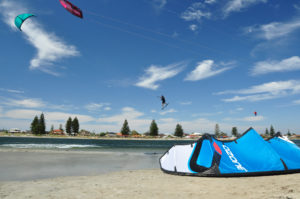The Dutch Golden Age
Europe, Learned something new today, Reviews, The Netherlands — By Kelly on May 18, 2009 6:23 AMWhen traveling to new parts of the world I naturally find myself learning interesting facts about the place I am visiting. A continuing education of the history of the world is one of my favorite parts of traveling. During my recent visit to The Netherlands I learned about The Golden Age, a period in Dutch history spanning the 17th century, in which Dutch trade, science, and art were among the most acclaimed in the world.
I found myself most intrigued by the fact that such a small country played such a huge role in the exploration of the world during this time. In the early 1600’s Dutch ships dominated seaborne trade and led the way in explorations, founding many new trading posts around the world…
The Dutch were in search for an Arctic route to the Pacific they instead rounded the tip of South America naming in Cape Hoorn after the city of Hoorn located north of Amsterdam.
In 1619, Dutch traders expelled the Portuguese from what is now Indonesia and established the town of Batavia (Latin for Holland, now the capital city of Jakarta) as administrative center for what would become the Dutch East Indies.
In 1624 the Dutch founded a trading post on Manhattan Island and called it New Amsterdam, the future New York City.
The Dutch competed with the Spaniards for control of present day Taiwan and gained control in 1641. Later Japan expelled all foreigners except the Dutch, who received sole trading rights on the island of Nagasaki because their aims were commercial rather than imperialistic or religious.
In 1652 they captured the Cape of Good Hope in South Africa from the Portuguese making it an important trading post with the East Indies. They also kicked the Portuguese out of Sri Lanka.
They explored the coastlines of New Zealand (named after the province of Zeeland) and New Holland (known as Australia since the 1850s). While visiting the south island of New Zealand, I kayaked through the beautiful Abel Tasman National Park, named after the Dutch explorer.
Around 1650 the Dutch had more seagoing merchant vessels than England and France combined, and half of all ships sailing between Europe and Asia were Dutch. Things changed greatly when England passed Navigation Acts requiring that goods shipped to England and its colonies had to be carried in English ships. This posed a serious threat to Dutch trading and led to the “Wealthy Decline” of the 18th Century.
The Dutch were traders first and foremost and didn’t have the population reserves for the settler-type colonization pursued by other European powers. I wonder how the world would be different today if the Dutch population had been larger? Perhaps most of the world would be speaking DUTCH!?
Tags: Europe, history, The Netherlands











1 Comment
Now I am singing They Might Be Giants…Even old New York once once New Amsterdam…interesting post!